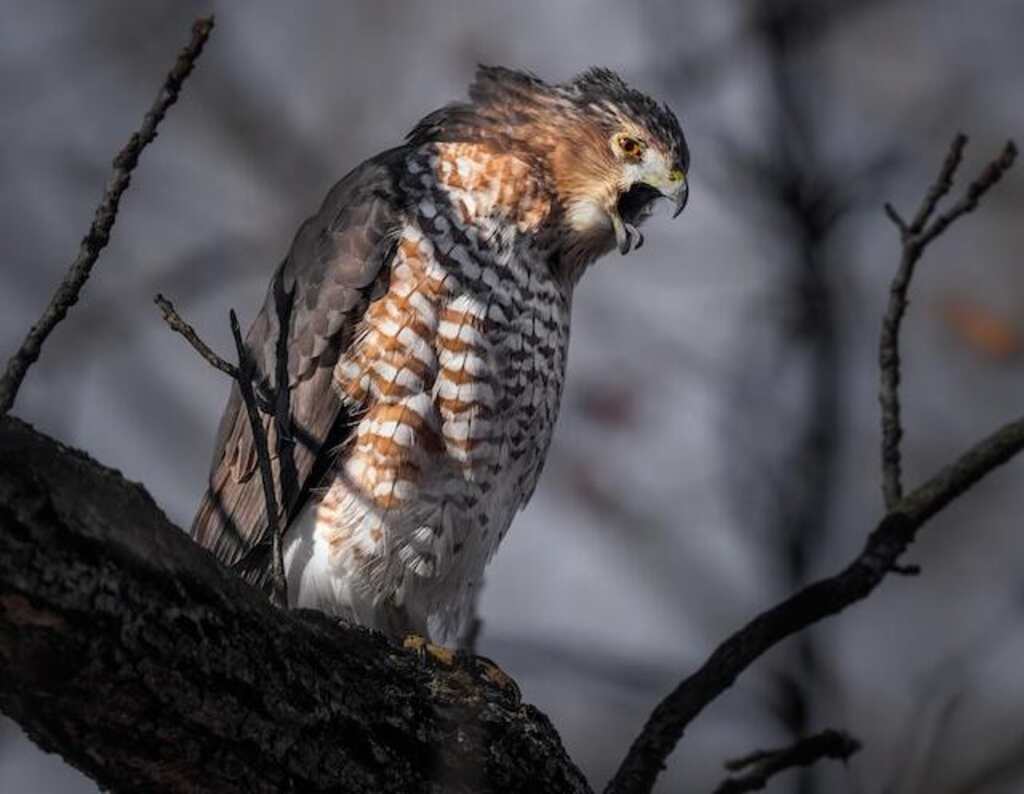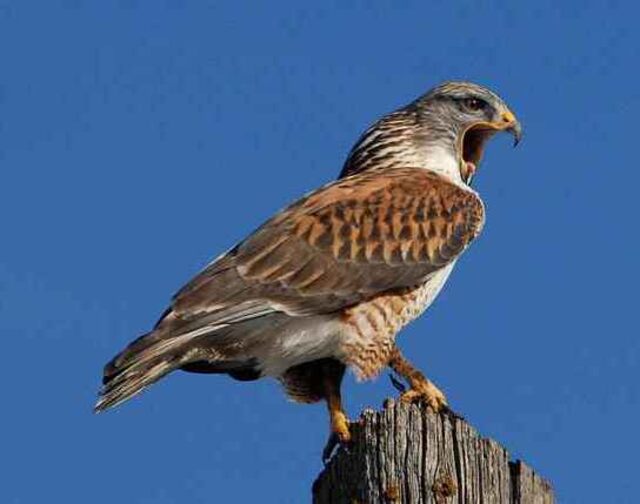Hold onto your feathers and get ready to dive into the fascinating world of hawk communication! From secret signals to aerial acrobatics, these feathered masters have developed a rich and diverse system to convey their messages.
But, how do hawks communicate with each other, you ask? We’re about to spill the beak on their unique methods of cooperation, territorial protection, and finding their perfect wing mate.
So buckle up and prepare to soar as we unravel the captivating language of hawks. Let’s dive right in!
Table of Contents
- 1 Brief Overview of Hawks
- 2 Importance of Communication in the Animal Kingdom
- 3 How Do Hawks Communicate With Each Other?
- 4 Types of Communication
- 5 Communication for Hunting
- 6 Communication for Mating and Territory Defense
- 7 Conclusion
- 8 FAQs: How Do Hawks Communicate With Each Other?
- 8.1 How do hawks communicate during hunting?
- 8.2 What vocalizations do hawks use for communication?
- 8.3 Do hawks use body language to communicate?
- 8.4 How do hawks attract mates?
- 8.5 Can hawks communicate with other bird species?
- 8.6 How do hawks establish territories?
- 8.7 Do hawks communicate with their offspring?
- 8.8 Can hawks communicate over long distances?
- 8.9 How do hawks communicate within a group?
- 8.10 Why is understanding hawk communication important?
- 9 Author
Brief Overview of Hawks
Hawks are birds of prey (raptors) belonging to the family Accipitridae. They have sharp talons and hooked beaks that help them hunt other animals for food.
There are over 250 species of hawks worldwide, with varying sizes and characteristics based on their habitat and diet.
Most hawks have keen eyesight, enabling them to spot prey from a long distance away. They also have strong wings and can fly at high speeds while diving or swooping down onto prey.
Hawks are found in many parts of the world, but are most commonly seen in open spaces such as fields or grasslands. Some species prefer living near water bodies like rivers or lakes.
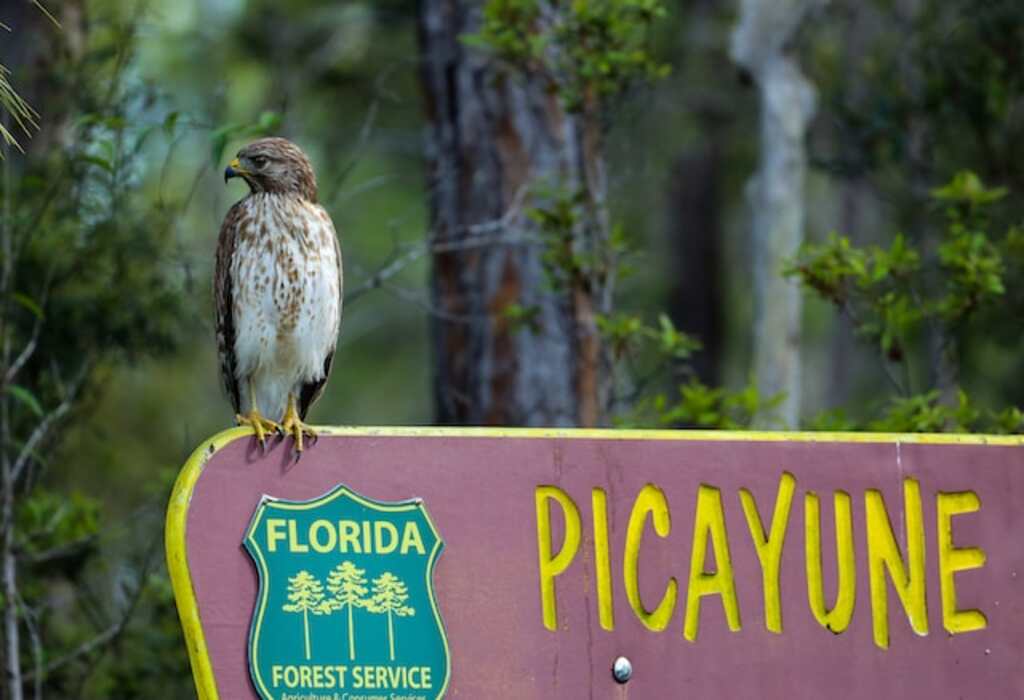
Importance of Communication in the Animal Kingdom
Communication is essential for survival in the animal kingdom as it helps individuals coordinate hunting efforts, warn against danger, and attract mates for reproduction.
Animals use different types of signals such as sounds, body postures, colors or scents in their communication process.
Clear communication ensures cooperative hunting between individuals, which increases success rates at capturing prey while avoiding injury themselves.
It also promotes mutual protection while defending territory boundaries from predators who may attempt to encroach on breeding grounds where offspring can be raised safely without fear of attack.
In many cases, animals use communication to find a mate. The signals they use can be complex and varied, ranging from displays of aggression to intricate courtship dances.
Successful mating often depends on the ability of individuals to accurately read these signals.
Overall, understanding animal communication is essential for developing effective conservation strategies that preserve species cooperatively and sustainably while maintaining biodiversity in their habitats.
How Do Hawks Communicate With Each Other?
Hawks communicate through a combination of vocalizations and body language. Vocalizations include specific calls for begging, warning, and mating.
Body language involves wing flapping, eye contact, and head movements to convey aggression, courtship, and territorial defense.
These communication methods allow hawks to coordinate hunting, protect territories, and find mates.
Understanding hawk communication enhances our knowledge of their behavior and aids in conservation efforts.
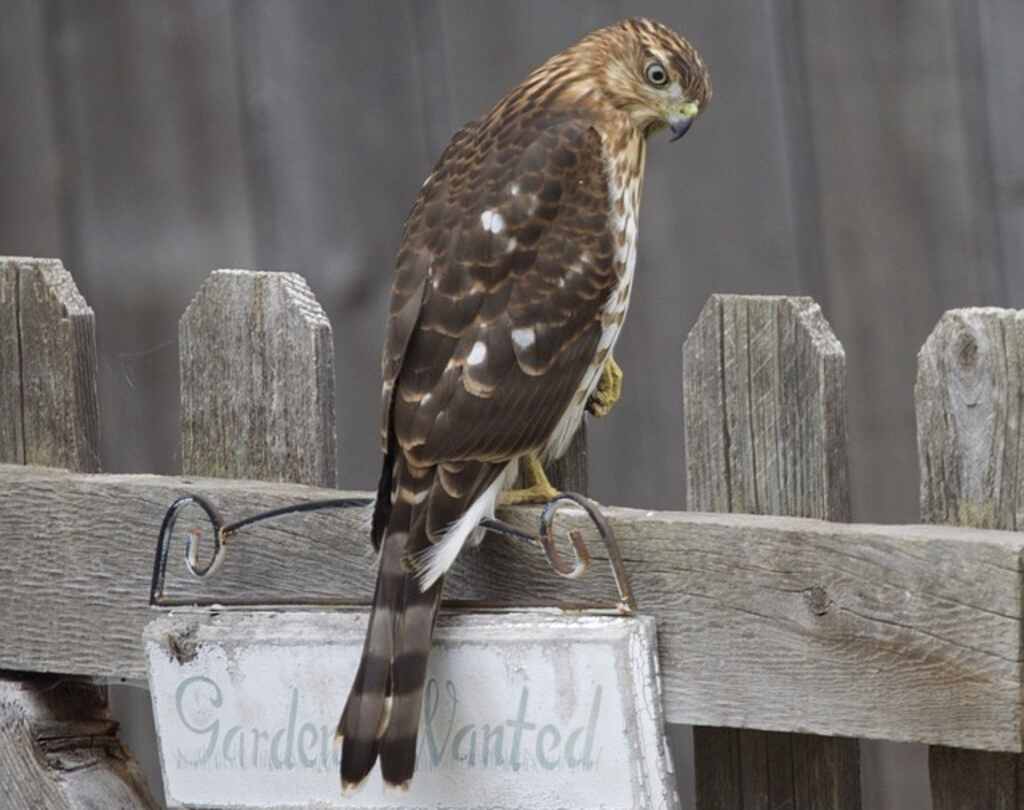
Types of Communication
Hawks communicate in a variety of ways, including vocalizations and body language. These forms of communication play an important role in the social behavior and survival of hawks.
Vocalizations
Hawks use a wide range of calls and screeches to communicate with each other. Each call has a specific meaning, which can include warnings, alarm calls, or mating calls.
For example, the “kee-kee” call is used by young hawks to beg for food from their parents, while the “screech” call is often used as an alarm to warn other hawks of danger.
The meaning behind different vocalizations can also vary depending on the context.
For example, during courtship displays, male hawks will emit a high-pitched “sky dance” call while performing acrobatic maneuvers in mid-air.
This call signals their interest in mating and serves as a way to attract female hawks.
Vocalizations of the most common hawks in North America include:
- Red-tailed Hawk (Buteo jamaicensis)
- Cooper’s Hawk (Accipiter cooperii)
- Red-shouldered Hawk (Buteo lineatus)
- Sharp-shinned Hawk (Accipiter striatus)
- Northern Harrier (Circus hudsonius)
- Broad-winged Hawk (Buteo platypterus)
- Swainson’s Hawk (Buteo swainsoni)
- Rough-legged Hawk (Buteo lagopus)
- Ferruginous Hawk (Buteo regalis)
Body Language
In addition to vocalizations, hawks also use body language to communicate with each other. This includes wing flapping and posturing, eye contact and head movements.
Wing flapping is often used as a sign of aggression or dominance during territorial displays or when competing for prey.
Hawks may also use wing flapping as part of their courtship displays by performing aerial dances that show off their agility and strength.
Eye contact
Eye contact is another important form of body language used by hawks. It can be used both for communication between individuals, but also when hunting prey.
When hunting together in groups; one hawk may lock eyes onto its target while another swoops down for the kill.
Head movements
Hawk’s head movements can indicate their mood or intention. For example, a hawk that is feeling threatened may puff up its feathers and lower its head to make itself look larger and more intimidating.
Alternatively, during courtship displays, hawks may bob their heads up and down or make quick movements to show off their agility.
Overall, understanding the different types of communication methods used by hawks can provide insight into their behavior and social dynamics.
By studying these forms of communication, scientists can gain a better understanding of how hawks interact with each other and how this behavior affects their survival in the wild.
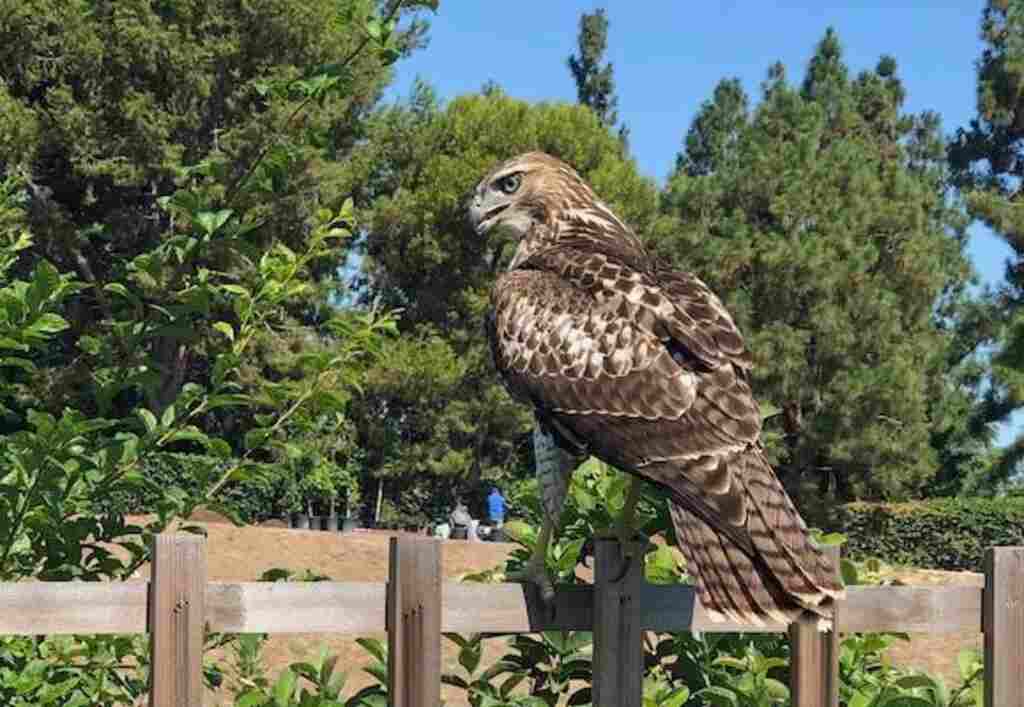
Communication for Hunting
Cooperation between Hawks: Strength in Numbers
Hawks are known to hunt alone, but they also exhibit cooperative hunting behaviors. Hawks that hunt cooperatively have a higher chance of successfully capturing prey, and this is especially true for larger prey.
Cooperating hawks will take turns attacking their prey, with one hawk distracting the animal while the other swoops in for the kill.
This strategy allows hawks to take down animals much larger than they could handle alone.
Hunting in Pairs or Groups: The Power of Teamwork
Hawks often hunt together in pairs or groups, depending on the species and prey availability. They communicate with each other during the hunt using vocalizations and body language to coordinate their movements and attack strategies.
One hawk may flush out prey from hiding while another waits to catch it mid-flight. In some cases, hawks will even share their catch with each other as a sign of cooperation.
Coordination during the Hunt: Communication is Key
Effective communication is essential during a hunt, especially when hunting cooperatively. Hawks utilize visual cues such as wing flapping and head movements to signal their intentions to each other.
They also use auditory signals such as calls and screeches to alert others about potential threats or opportunities for food.
Warning Calls: Alerting Other Hawks of Prey or Danger
When one hawk spots potential prey or danger, it will emit warning calls that can be heard by other nearby hawks.
These calls signal danger and urge other hawks to remain vigilant or move away from the area.
During a hunt, these warning calls can tell other cooperating hawks where they should position themselves for better success.
Communication plays an important role in hunting behavior among hawks – whether it’s hunting alone or with others.
Hawks communicate using a variety of methods, including vocalizations and visual cues such as wing flapping and head movements.
Communication enables hawks to hunt cooperatively, take down larger prey, and stay alert to danger.
By studying hawk communication, we can gain a deeper understanding of these fascinating creatures and work towards their conservation.
Communication for Mating and Territory Defense
Hawks, like many other birds, have a strong innate drive to mate and reproduce. As such, communication is essential for finding a mate, defending territory, and establishing social hierarchy.
Courtship displays are one way hawks communicate with potential mates. These displays involve both vocalizations and body language.
Courtship Displays through Vocalizations
Male hawks often use vocalizations to attract females during courtship displays. These calls can vary in tone and pitch depending on the species of hawk.
For example, some hawks will emit high-pitched whistles or trills while others will make harsh screeches or screams.
Females also participate in courtship vocalizations by responding to the male’s calls with their own unique sounds.
These calls are usually quieter than the males’ but are just as important in communicating interest in mating.
Courtship Displays through Body Language
In addition to vocalizations, hawks also use body language during courtship displays. The male may perform aerial acrobatics or bring gifts of food to impress the female.
The female may respond by fanning her tail feathers or raising her wings in a submissive posture.
During successful courtships, both birds will engage in mutual preening – grooming each other’s feathers as a sign of affection and bonding.
Territorial Displays to Ward off Other Hawks
Hawks are fiercely territorial birds that defend their hunting grounds from other animals, including other hawks.
Territorial disputes can often lead to battles between rival males as they fight over prime nesting sites. Territorial displays involve both vocalizations and physical posturing.
A hawk defending its territory may emit warning calls that let rival birds know they are not welcome in the area.
Physical posturing involves puffing up feathers to appear larger, as well as lowering the head and spreading the wings to appear more intimidating.
This display is usually enough to ward off potential intruders without resorting to physical violence. Communication plays a vital role in the social interactions of hawks.
From finding a mate to defending territory, hawks use both vocalizations and body language to convey messages to other birds.
Understanding how these birds communicate can help us better appreciate and protect them as important members of our ecosystem.
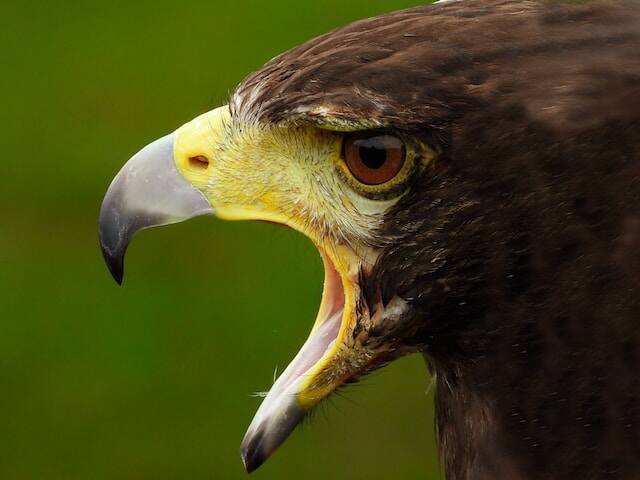
Conclusion
Hawks have various ways of communicating with each other; through vocalizations and body language. They use their communication skills for hunting, mating, and territorial defense.
Through coordination, warning calls, courtship displays and territorial displays, the hawks are able to convey information to other hawks about their intentions or the presence of prey or danger.
Understanding animal communication is essential in conservation efforts, as it enables us to better appreciate and protect these beautiful birds from extinction.
By understanding their vocalizations and body language, we can learn more about these creatures and their environment.
Conservation efforts should take into consideration the importance of preserving habitats that provide food and shelter for these majestic birds.
The Importance of Protecting Endangered Species
The world would be a poorer place without the sight of a hawk soaring high above us. Unfortunately, many species of hawks are endangered due to habitat loss caused by human activities such as deforestation and urbanization.
The use of pesticides also poses a threat to hawk populations by reducing their prey population.
It is important that we all take responsibility for protecting these amazing creatures by conserving natural habitats, reducing waste products that pollute our environment which affect prey sources, minimizing noise pollution in their nesting areas as well as enacting legislation that protects wildlife from harm.
The Interconnection between Humans and Nature
Hawks play an important role in our ecosystem by controlling rodent populations, which can cause destruction in farms or spread diseases.
They also play an aesthetic role in nature; watching a spectacular scene of a hawk gliding effortlessly across the sky has been known to bring joy to birdwatchers all over the world.
We have a duty towards nature—as its stewards—to preserve biodiversity for future generations to enjoy.
By taking care of our environment, we ensure a healthier planet for all of its inhabitants.
The protection of hawks and other endangered wildlife is therefore important not only for their survival, but for humanity’s as well.
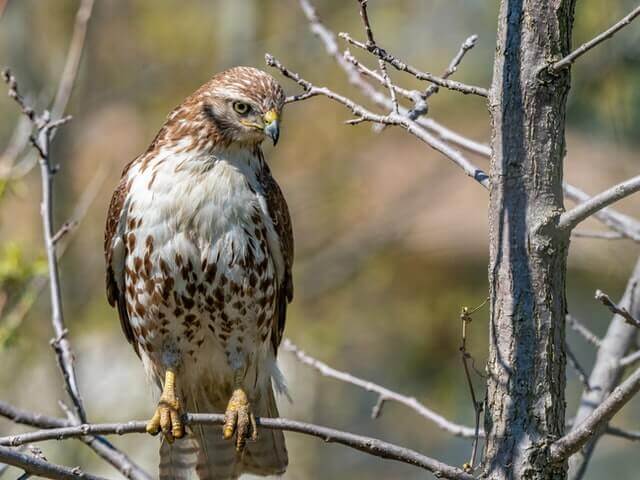
FAQs: How Do Hawks Communicate With Each Other?
How do hawks communicate during hunting?
Hawks communicate through visual cues like wing flapping and head movements to coordinate their actions. They also use vocalizations to alert others about prey or potential threats.
What vocalizations do hawks use for communication?
Hawks have specific calls for various purposes. These include begging calls from young hawks, alarm calls to warn of danger, and courtship calls to attract mates.
Do hawks use body language to communicate?
Yes, hawks use body language such as wing flapping, eye contact, and head movements. These gestures convey aggression, courtship, territorial defense, and cooperation during hunting.
How do hawks attract mates?
Male hawks emit specific vocalizations, perform aerial displays, and may bring gifts of food to impress females during courtship. Female hawks respond with their own calls and body language to indicate interest.
Can hawks communicate with other bird species?
Hawks primarily communicate with members of their own species, but they may also interact with other bird species using similar visual cues and vocalizations.
How do hawks establish territories?
Hawks defend their territories through territorial displays involving vocalizations and physical posturing. Warning calls and body language communicate their boundaries and deter intruders.
Do hawks communicate with their offspring?
Yes, hawks use vocalizations to communicate with their young, especially during feeding and nesting. Begging calls from the young hawks signal their need for food from their parents.
Can hawks communicate over long distances?
Hawks can communicate over moderate distances using their loud vocalizations, which can carry through open spaces. Visual cues like wing flapping can also be seen from afar.
How do hawks communicate within a group?
Hawks in groups use vocalizations and body language to coordinate their hunting efforts. They signal each other about prey sightings, attack strategies, and potential threats.
Why is understanding hawk communication important?
Understanding hawk communication helps us comprehend their behavior patterns, social dynamics, and hunting strategies. It aids in conservation efforts by providing insights into their needs and facilitating habitat protection.

